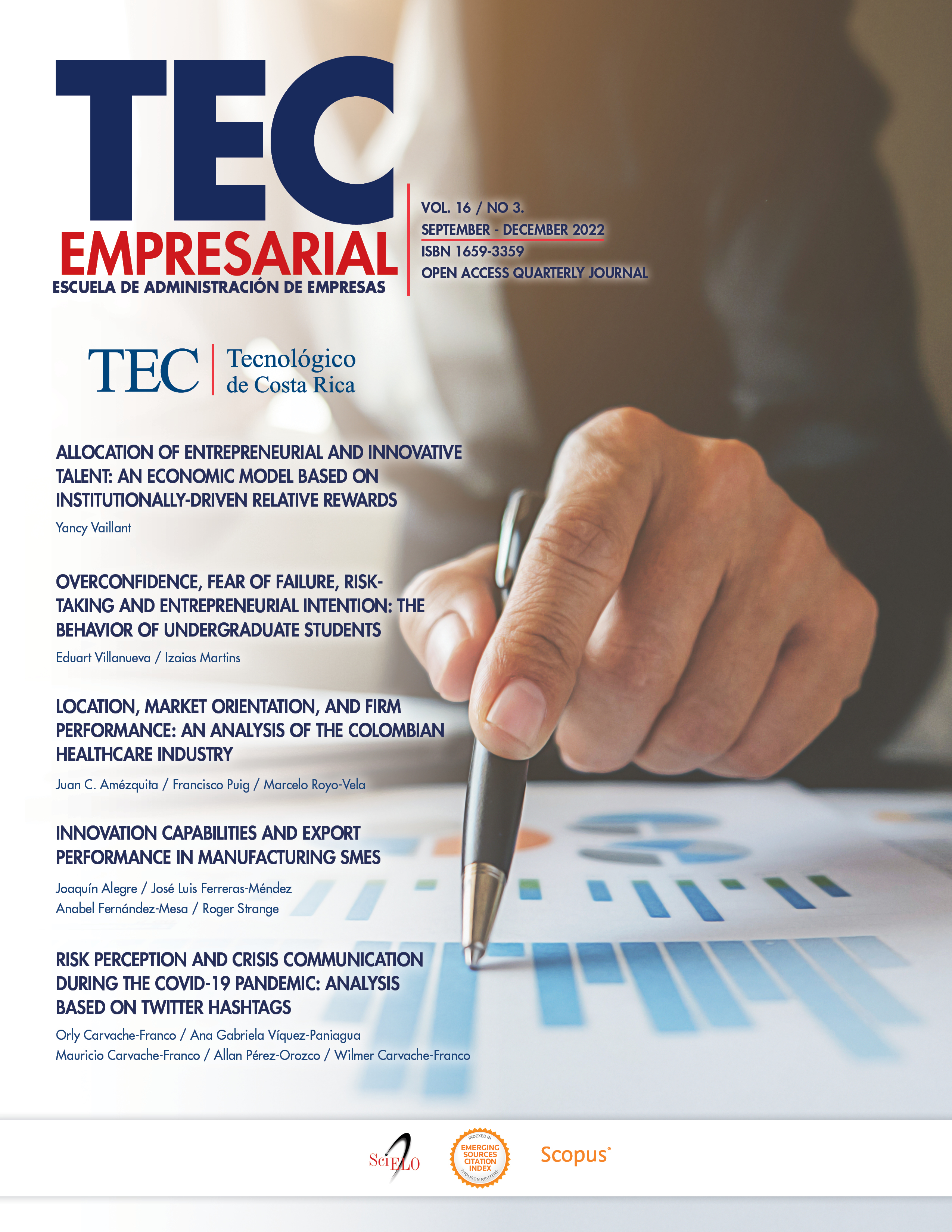Percepción de riesgo y comunicación de crisis durante la pandemia de Covid-19: Análisis basado en hashtags de Twitter
Contenido principal del artículo
Resumen
Esta investigación evalúa las estrategias de respuesta a la comunicación de crisis, en términos de riesgos percibidos, en las organizaciones durante la pandemia de Covid-19, mediante el estudio de los principales temas de discusión en las redes sociales. Los datos se recopilaron en Twitter entre marzo y abril de 2020. Mediante el uso de software de big data, se extrajo un número total de 3559255 tweets en diferentes idiomas en todo el mundo de la API de Twitter de hashtags populares sobre la pandemia de Covid-19. El procesamiento de datos se realizó a través de la asociación de términos con el fin de identificar patrones y relaciones en los temas de discusión. Los resultados indican que las relaciones de los términos "crisis" y "riesgos" fueron estadísticamente significativas con siete temas importantes para empresas, usuarios y consumidores: "negocio", "económico y financiero", "social", "salud"," trabajo”, “familia” y “gobierno”; ya su vez estos siete temas se relacionan con otros términos relacionados con el impacto de la crisis, la respuesta a la crisis, la ayuda, la vigilancia y el apoyo. Esta investigación tiene implicaciones para la teoría de la comunicación de crisis situacional al mostrar que, en situaciones con alto riesgo percibido, como la crisis de la pandemia de Covid-19, el uso de estrategias de respuesta a crisis predomina en las organizaciones. Esta investigación también tiene implicaciones para los gerentes que pueden usar estrategias de respuesta a crisis para reconstruir su reputación y evitar pérdidas en el mercado, ayudando así a reducir los efectos de situaciones de crisis impredecibles.
Detalles del artículo
La versión digital de la revista se encuentra registrada bajo la licencia Creative Commons BY-NC-ND 4.0. Por lo tanto, esta obra se puede reproducir, distribuir y comunicar públicamente sin propósitos comerciales, siempre que: 1. Se reconozca el nombre de los autores y la revista Tec Empresarial, y 2. No remezcle, transforme o haga una creación a partir del original.
Los autores conservan los derechos de autor y ceden a la revista el derecho de la primera publicación y de que pueda editarlo, reproducirlo, distribuirlo, exhibirlo y comunicarlo en el país y en el extranjero mediante medios impresos y electrónicos. Por otra parte, el autor declara asumir el compromiso sobre cualquier litigio o reclamación relacionada con derechos de propiedad intelectual, exonerando de responsabilidad a la Escuela de Administración de Empresas del Tecnológico de Costa Rica.


